By James Ott
Special to NKyTribune
A varied cache of art treasures adorned the Monterey home of the late Hope Duveneck Williams, the last living grandchild of renowned artists Frank and Elizabeth Boott Duveneck.
Hope lived on a hilltop in view of California 1 and Monterey Bay, famous for its deep underwater canyon teeming with varied marine life. I visited her in June 2014, in her residence in the respectable “up the hill” locale of Monterey, so described in Steinbeck’s short novel, Cannery Row, the story of denizens of a fishing shack near the shore. I was doing research on the Duveneck family for my biography, published in 2016, The Greatest Brush, Love, Tragedy and Redemption of Artist Frank Duveneck. I was eager to hear what Hope had to say. She was the closest tie to Duveneck (1848-1919), our region’s likely greatest contribution to the creative world.
I found a sprightly nonagenarian, a pottery artist, very down to earth. Physically she reminded me of her activist mother, Josephine Whitney Duveneck, who established a youth hostel and summer camp on their 2,000-acre estate, Hidden Villa Ranch, in the Los Altos Hills. Yet there was in her face and figure a component of the tall lanky mustachioed man I shook hands with, Frank Jr., only child of Frank Duveneck, a retired engineering professor when he visited Covington in the late 1960s.
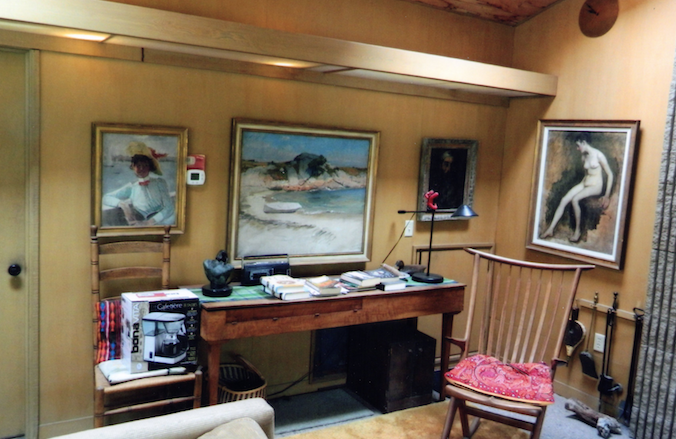
The next several hours with Hope were enlightening. She talked easily about her famous family, grandparents from artistic successes of the 19th Century and her parents, locally prominent in California through the mid-20th century and purveyors of the enduring Duveneck legacy in Hidden Villa Ranch and its mission of land preservation, social justice and environmental education.
Hope knew personally neither of her grandparents. Elizabeth Boott Duveneck died in 1888 in Paris. Her grandfather Frank passed in 1919 in Cincinnati when she was less than a year old living in California. She spoke of them in terms of their legacies, relayed family talk about them, and addressed their works of art which remain in demand and highly valued today.
Paintings and sketches not displayed were carefully stored in the well-shaded ranch-style residence.
She had no single favorite among her grandparents’ artworks, though she was in her words “fond” of four Frank Duveneck paintings which hung on the wall of her sitting room.
The most prominent, Girl in Boat, was painted in 1912 reflecting an Impressionist style the artist later adopted. The young woman is leaning on a railing. She wears a high-collared white blouse and a wind-blown straw hat. A red bow tie matches the color of a fluttering band on her hat. The sunburned and smiling face of the subject evokes the sense of a holiday on the shore. Serving as backdrop is the gauzy harbor of the resort and fishing town of Gloucester, Massachusetts. Duveneck spent holidays and many summers, visiting his son in nearby Boston where he was being reared by Lizzie’s relatives.
Hope said a rendering of Brace’s Rock, a well-known site in Gloucester harbor, was an exercise in her grandfather’s teaching methods, not quite finished and demonstrating to students where to focus attention—on the rock itself. She admired his work, the Professor, the face of an educator emerging from a dark background, an oil portrait from his early Munich period, following a style known as Realism, reminiscent of classicists Frans Hals and Rembrandt.
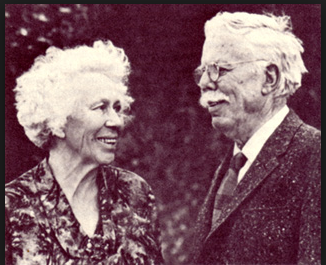
The final of the foursome was a standing nude, one of many executed in Cincinnati around the start of the 20th Century.
Among Hope’s treasures were oils, watercolors and sketches by her grandmother Elizabeth Boott Duveneck, known as Lizzie. An expatriate and an heiress of a New England textile fortune, Lizzie was especially talented in drawing and watercolors. She trained in Europe and in Boston and is widely regarded as a forerunner of today’s women artists. She studied with Duveneck in Munich and was instrumental in moving Frank’s class of young artists, the Duveneck Boys, to Florence, Italy, her home. In Florence is where the youthful art students gained fame as the fictionalized Inglehart boys in Hamilton, Ohio-bred William Dean Howells’ 1886 novel, Indian Summer.
Hope and her three siblings, Barney, Francis and Liz, acquired shares of the family-owned treasures during the 1970s. Their mother Josephine Whitney Duveneck unveiled the cache one day at Hidden Villa. She told them she wanted the artworks to be seen, not hidden away. She chose a random method to distribute the works, set out playing cards and allowed each of the four to pick up one card. The holder of the highest card in that particular round had first choice.
Hope collected her favored four paintings, another oil of a merchant ship in what appears to be the harbor in Venice, and one of a young Italian child by her grandmother. She also chose numerous well-drawn and colored sketches by Lizzie.
The Duveneck family in California has been generous with gifts of art. They gave paintings to the Kenton County Library in the 1960s, including one of Mollie Duveneck, Frank’s half-sister, who lived with him in Covington at 1232 Greenup Street. More than 600 artworks, paintings, studies and etchings, and several sculptures, have been identified as definitely his.
Other works of art may be unaccounted for in Cincinnati area homes that show the Duveneck touch as he worked closely with students at the Cincinnati Art Academy and often polished students’ efforts. He taught at the academy continuously from 1901 until his death.
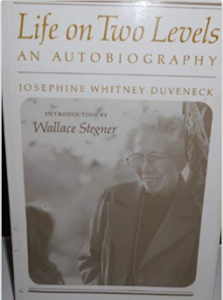
The largest collection of Duveneck’s paintings is found in the Cincinnati Art Museum. In 1915, after winning a gold medal at the Panama Pacific Exposition in San Francisco, the painter donated more than 140 works to the museum. The collection has grown, and many works are in climate-controlled storage, brought out for special exhibits. The museum is working on a traveling exhibit to commemorate the centenary of Duveneck’s death in 1919. Museum officials are participating with individuals from other area organizations and institutions in a Year of Duveneck events in 2019 that will focus on the artist, his works, and his legacy
Duveneck is not only known as a Cincinnati artist. Other areas have claimed him. He is included among Boston artists in a survey by the artist-art historian R.H. Ives Gammell. On the international front, Frank’s works are highly regarded as representing the Munich school. Most notably, Frank and Elizabeth Duveneck’s works were highlighted in a 2012 exhibit in Italy, titled Americans in Florence. The American Art Review, a contemporary pictorial journal of exhibitions, frequently publishes photographs of Duveneck art, either in gallery advertisements or to illustrate articles.
Hope was familiar with family legends in part from her mother Josephine’s two books, Frank Duveneck, Painter-Teacher, and her mother’s autobiography, Life on Two Levels. For the artist’s biography, Josephine had the resource of kept notes from lengthy discussions with Frank while she and Frank Jr. lived in Cincinnati before World War I. Frank’s recollections of growing up in Covington and his many interests and events throughout his life in Europe constituted much of her privately printed 1970 book.
“She was very fond of him, and he, of her,” Hope recalled.
Though the marriage of Frank and Lizzie is historically distant, Hope has opinions about the difficulties her grandparents faced when they were first engaged around 1880. Lizzie’s father, Francis Boott, a Boston Brahmin, opposed the marriage. He was “appalled,” she said, learning that Duveneck’s stepfather, Squire Duveneck, operated a beer garden in Covington. Other Boston family and friends disapproved, including the author Henry James. Lizzie and Frank’s engagement ended in 1881.
Henry James’s role in the affair remains ambiguous. He was Lizzie’s friend and exchanged with her more than 80 letters, some written in Italian. He referred to her as Cara Lisa. In turn she wrote to him as Cara Enrico. He was so close that Lizzie and Francis Boott served as models for fictional expatriate characters in his Portrait of a Lady and The Golden Bowl.
James believed the class difference between the two would be fatal to a long-standing union. He had also written that Duveneck was a kindly and talented man but he called him illiterate and lazy, and he had forecast a doubtful future for him as an artist.
“Henry James was a snob,” said Hope. She believed the author was in love with Lizzie and found in Duveneck a strong competitor.
“It’s just a feeling,” she said.
True love, however, conquered all for Frank and Lizzie. Mr. Boott later approved of the 1886 marriage, though he secured a prenuptial agreement (which is on file in Kenton County Court), establishing Lizzie as the sole owner of her financial interests. The birth of Frank Jr. later in 1886 changed everything. Mr. Boott repudiated the agreement. The newly expanded family, grandfather, Frank and Lizzie and baby Frank, kept residence in Villa Castellani on Bellosguardo hill outside of Florence.
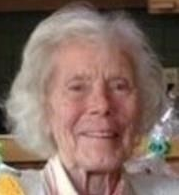
Hope was familiar with Cincinnati from visits over the years and the Duveneck House at 1232 Greenup Street in Covington. She recalled with pleasure seeing her grandfather’s murals in the Cathedral Basilica of the Assumption painted by him 1905-1910. She also saw the elaborate study of the murals in a triptych which hangs in the board room of Good Samaritan Hospital, Cincinnati.
The granddaughter knew and loved her uncle, Charlie Duveneck, the last surviving sibling of the Covington family. After his brother Frank’s death in 1919, Charlie at first visited and then later moved to Hidden Villa. Hope said she was his favorite among the four Duveneck children. In those years he would take her to the thoroughbred horse races in San Francisco. They would look over horses in the paddock and study the histories and lay bets, usually $2.50.
“We never made any money,” Hope says, but she had lots of fun.
She said Uncle Charlie did not resemble his famous half-brother, her artist grandfather, who stood a robust five-foot-nine and had a full head of light-colored hair. Charlie must have favored his thin and angular mother, Katherine Siemers Duveneck. In letters from the artist Duveneck over the years, Charlie emerges as a kind of beloved character known for his fun-loving ways. “He spoiled me and I loved it.”
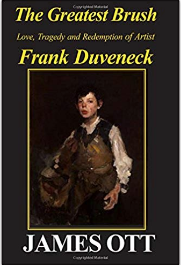
A widow of physician Russell Williams, Hope kept in close touch with nieces and nephews in California and around the country. She took pride in her family and her mother, a daughter of privilege, a Whitney from New York, a writer known for her social conscience.
In her autobiography, Josephine detailed a personal search for meaning in life, wrote of the joys of family living and the responsibility of people to serve others. As a result the Duveneck name in the Bay area region means more than talent in art. Starting in the 1940s, the family created a haven for the disadvantaged in society. They operated summer camps for the poor at Hidden Villa and opened it to refugees from Nazi Germany, Japanese-Americans interned during World War II, and field workers from Cesar Chavez’s unionization movement in California.
After the deaths of Frank Jr., former professor of engineering at Stanford University, and Josephine, Hope and her siblings dedicated 2,000 acres of Hidden Villa to the Mid-Peninsula Regional Open Space District and the Trust for Hidden Villa, which has continued the Duveneck legacy of service. In gratitude for the family’s service to the community, a school in Palo Alto was named, Duveneck Elementary.
Hope, who died in August 2017, at age 99 years, carried on the Duveneck social legacy on a personal level. She put to use her graduate degree in occupational therapy from the University of Southern California by working with disabled youth. She was a talented potter and sold creations, often animal and dinnerware at Peninsula Potters in Pacific Grove, California. Perhaps recalling her family’s strong and deep Cincinnati connections, a favorite subject was handmade flying pigs.
James Ott is a freelance writer from Crescent Springs. His biography of Frank Duveneck was published in 2016 by Branden Books of Boston.

















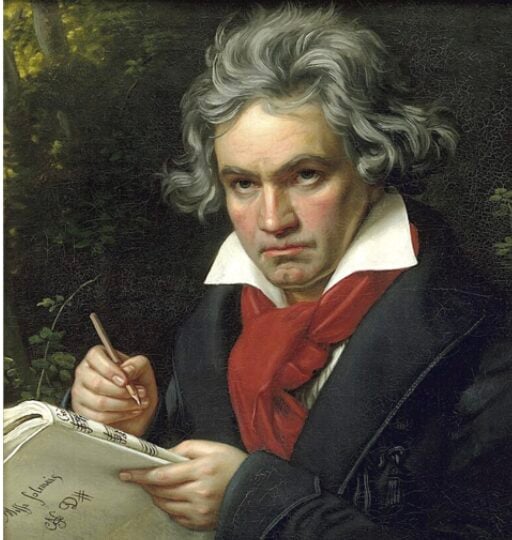



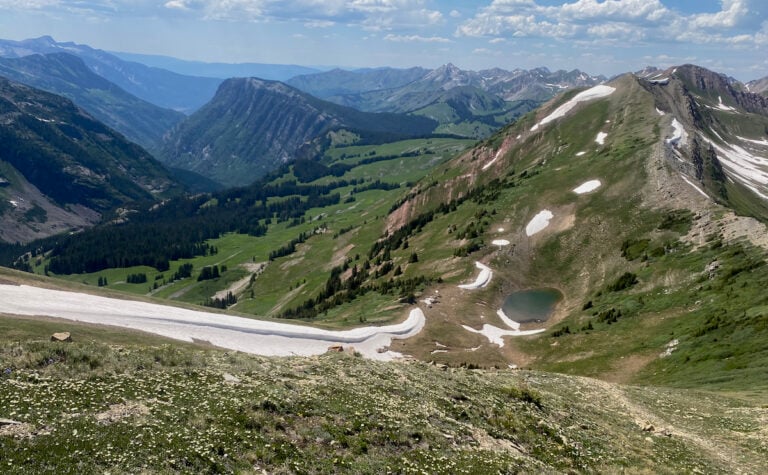
It was Spring break,1967; I was studying at UC Davis. I remember driving past the Olive Grove on a rainy March day, admiring how sunbreaks illuminated green tree tops against the gray sky. I parked near The Big House for my interview with Mrs. Duveneck, Josephine. She hired me as a summer camp counselor and for two summers, I also taught arts and crafts. The campers called me “Kathy Craft.” An awkward teen immigrant, I found the Duveneck family welcoming, gentle, inclusive, and creative. Decades later, as a retired teacher and professional artist, I feel my HIdden Villa experience was meant to be, a portal of sorts, to discover a real spirituality amid nature that continues to feed my artistic inspiration.
Spent many days wandering the trails. Pure bliss. My sister and hubby managed the ranch from 1973 to 1990. Got to visit big house and meet Frank and Josephine. Lived in house on creek that is next to barn. Once again pure bliss. Somewhere along the trail there is a redwood tree that we planted. We placed my Mom’s and my sister Linda’s ashes back in 1976. Forever a special place created by special people. Wish i didn’t live so far away. Look forwatd to reading your book. Always wondered what Henry’s true intentions were.
Frank and Josephine (“Mr and Mrs” to us) were like my grandparents. one son – Bernard Duveneck – helped out founding Lawrence Lane in Palo Alto, one of the first (perhaps the first) planned integrated neighborhoods in Palo Alto in 1951-52. My parents led the MidPeninsula Fair Housing Coalition – with the help of many other great people, they broke the “color line” in Palo Alto in the 50’s. I grew up attending Hidden Villa and ended up as head riding (horses) counselor at the summer camp after working my way up from dishwasher. Dave (grandson) and I shared the little trailer above the “Big House” one year while he worked at Friends Outside in lieu of serving i in Vietnam. I wandered in and out of the house like I was family when I was a dumb teenager. Frank and Josephiine Duveneck attended my wedding to my wife of 44 years , Severiana. These are the greatest Americans I’ve known in my lifetime.
Dale Austin (Austin) Jenkins
San Martin, CA
My great Aunt Jessie Holliday married EDMUND TROWBRIDGE DANA, they had a son Shaw/Dan Dana who in turn married Elizabeth Boott Duveneck. Do you have any records that can help me trace the family. Jessie was an artist and lived in the Uk before she met Edmund . She left the Uk and went to live in America.I am very interested to find any family history and if you can help me i would be grateful. I live in the UK
I went to Hidden Villa in the 60s, my mother Valery McKee was a counselor there when she was young and her parents were very close with Josephine and Frank Duveneck. One year at Hidden Villa I met you Austin, you were in charge of the horses and we became good friends that year and you came to Whitethorn and lived in our barn. I am Lela McKee and I often wondered what happen to you after you left us. We have fond memories of that time you stayed with us and time spent at Hidden Villa Camp. What a gift they were to so many and what an amazing legacy they left behind and their family.
Today is my birthday and I received an email from Legacy.com about my father, they do that some times. Tonight I opened it to find your sweet memory that you had of your time spent with us helping out with our cow and building on the house. I hope life has been good to you all of these years. What a special birthday gift to find you here in these two places this evening.
Sending greetings from Whitethorn! We are all here living on the homestead. If you and your wife ever are passing this way please look us up!
Such a wonderful memory. Thanks for contributing.
I met 4 of Duveneck’s grand children in 1983 and visited their homes. I also curated an exhibition of etchings by Frank Duveneck for the Beheringer Crawford Museum in Covington, KY. in1988, which Hope and her brothers loaned to exhibit.
Hidden Valley Ranch was inspirational to me because it was a place for troubled youth and the beauty of nature was very healing.
The 4 grandchildren were all very down to earth, warm and welcoming and I personally liked them very much.
It is a happy memory.